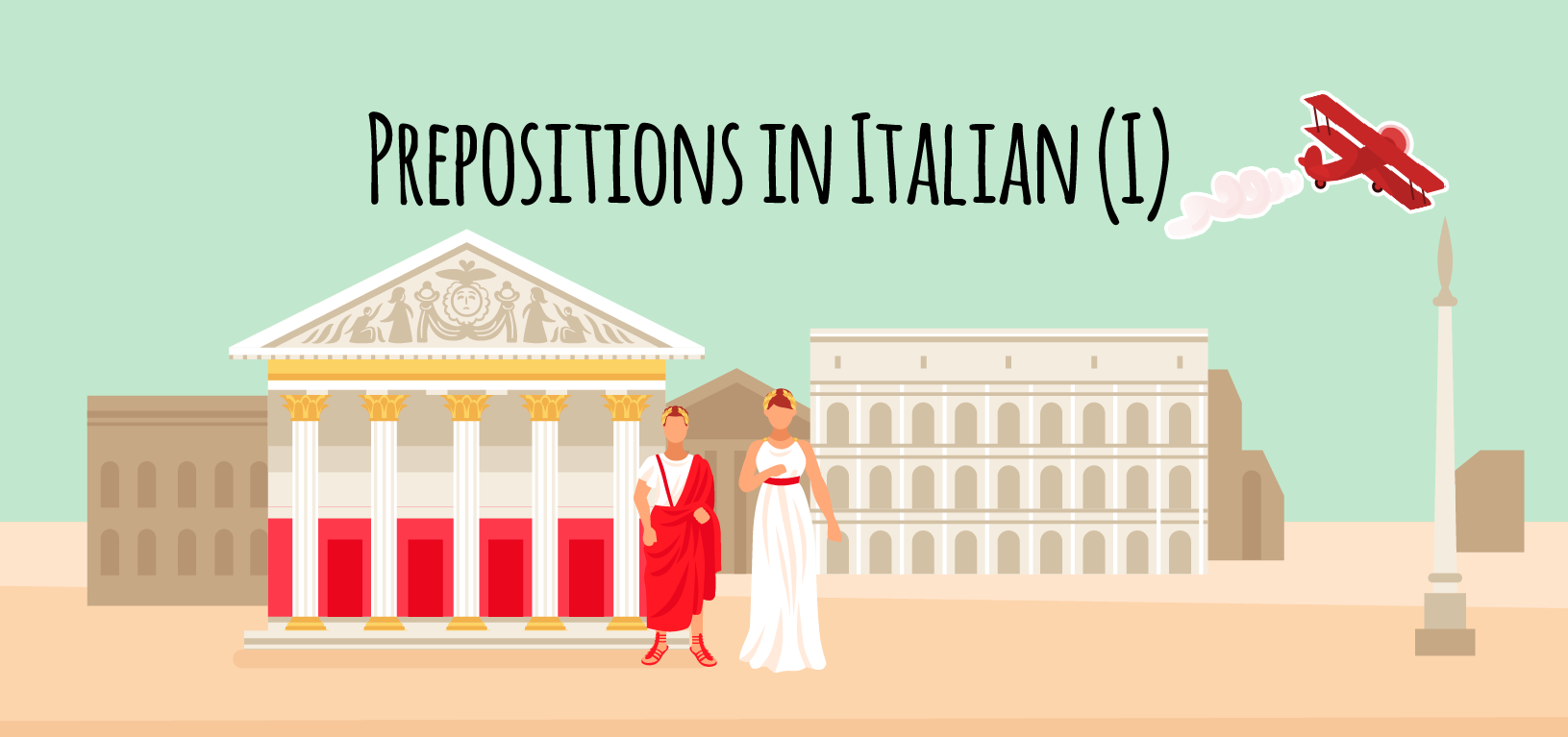Prepositions in Italian (I)

Italian Prepositions (I): Simple Prepositions
Today we are going to study the prepositions in Italian, the simple and most used, so that you know them well, you can put them into practice correctly from the beginning. We recommend that you take contact with this part of grammar from the initial levels, and that you learn to put them into practice as well as you begin with the study of the language. Let’s go there!:
For those of us who love the world of languages, we know very well the importance of prepositions. In case you are not completely clear, remember that they are those words that serve as links, as a union among others, to form compound expressions, sentences, etc.
And it’s not easy, we already know; When studying a foreign language, internalizing the use of prepositions is very difficult. It turns out that each of them can be used in different cases and, moreover, in expressions made that by themselves have a very different meaning from the one generally given to the separate preposition.
Today we are going to study the prepositions in Italian, the simple and most used, so that you know them well, you can put them into practice correctly from the beginning. We recommend that you take contact with this part of grammar from the initial levels, and that you learn to put them into practice as well as you begin with the study of the language. Let’s go there!:
Simple prepositions in Italian are di, a, da, in con, su, per, tra, fra . We will see individually one by one, and the elementary characteristics of each of them.
TO.
It is a preposition that generally has the same meaning as in Spanish, a, towards or in (a place). When it is in front of a word that begins with a vowel, it becomes ad.
Applications:
- indicate place and address;
- with generic cities, towns, islands and places.
Examples:
- Domani andiamo to Rome: Tomorrow we are going to Rome.
- Venite a scuola ?: Are you coming to school? (generic place)
- Dare ad intendere: Give to understand.
- Among the expressions already made with this preposition we find:
- A lungo andare: In the long run
- Avere a che fare: Having to deal with.
- Beato a te !: How lucky you are! How lucky you are!
Gave.
This preposition has almost the same meaning as that of in Spanish . It can be abbreviated as D ‘if the word that follows begins with a vowel, and it can also be placed without abbreviation with the same effect. But if that vowel is i, elision usually always occurs
Uses :
- to mention someone’s hometown;
- as possession;
- mention different parts of the day;
- to describe objects and the materials they are made of.
Examples:
- Anna è di Madrid: Anna is from Madrid.
- Lui è d´Italia: He is from Italy.
- É il cane di Piero: It is Piero’s dog (possession)
- Di mattina riposo e di pomeriggio studio: In the morning I rest and in the afternoon I study (separate parts of the day)
- Questa sedie è di legno: This chair is made of wood (description of objects with their material)
Gives.
This preposition can mean in Spanish from, from.
Applications:
- as an element of language it functions to denote provenance, starting point or point of departure;
- describe a situation that happened in the past and is still ongoing;
- when we are moving towards a place.
Examples:
- Veniamo da Firenze: We come from Florence (starting point)
- Il bus va dall ‘Italia alla Francia: the bus goes from Italy to France (start)
- Da sabato ti apettiamo: We wait for you from Saturday (event of the past that remains)
- Some expressions made with this preposition are:
- Abito da sposa: wedding dress
- Macchina da scrivere: typewriter
In.
In Italian the fact of saying inside and above is very different. For this reason, In should not be confused with His, each one has its own particular and specific use.The most widely used generic translation is en, inside.
Applications:
- when someone or something is inside something;
- when countries, towns or regions are named;
- location of a place.
Examples:
- Il cane è in una scatola: The dog is inside a box (inside something).
- A house in Germania: A house in Germany (geographical location of something).
His.
The most frequent translations of this preposition are en, sobre, above.
Applications:
- complement of an argument of someone;
- with approximate numbers;
- to identify the position of an object that rubs or is on top of something.
Examples:
- His question is indecisive: On this subject I am undecided (argument)
- Un ragazzo sulla ventina: A boy of about 20 years old (approximate years)
- Il pane è sul tavolo: the bread is on / on the table (location of an object)
Tra, fra.
They are two propositions that by use and meanings can be considered identical, they are interchangeable. Both orally and in writing, you can choose one or the other, especially in cases where one of them can cause an unwanted, ugly sound. They can be translated as between (place), within (time):
Examples:
- Lui has a house tra / fra le montagne: He has a house between the mountains.
- Fra / tra dieci giorni: Within 10 days.
Con: This preposition is very easy for Spanish speakers to use, since it more or less has the same functions as in Spanish and the same meaning, with.
Applications:
- usually introduces add-ons, company, indirect, etc.
Examples:
- Sono in Spagna with my family: I am in Spain with my family.
Per.
It can be translated as by and as for, generally.
Applications:
- The most frequent are complements of motive, cause
Examples:
- Il gatto magiolava per la fame: The cat was meowing from hunger.
- Siamo qui for a consultation: We are here for a consultation.
Also, and if you are reviewing prepositions in Italian because you want to obtain an official title, here are the next available calls.



